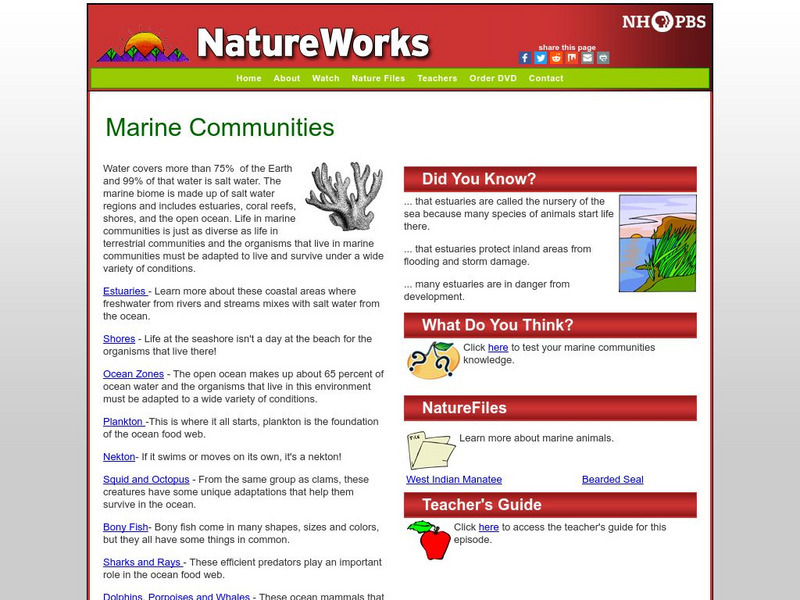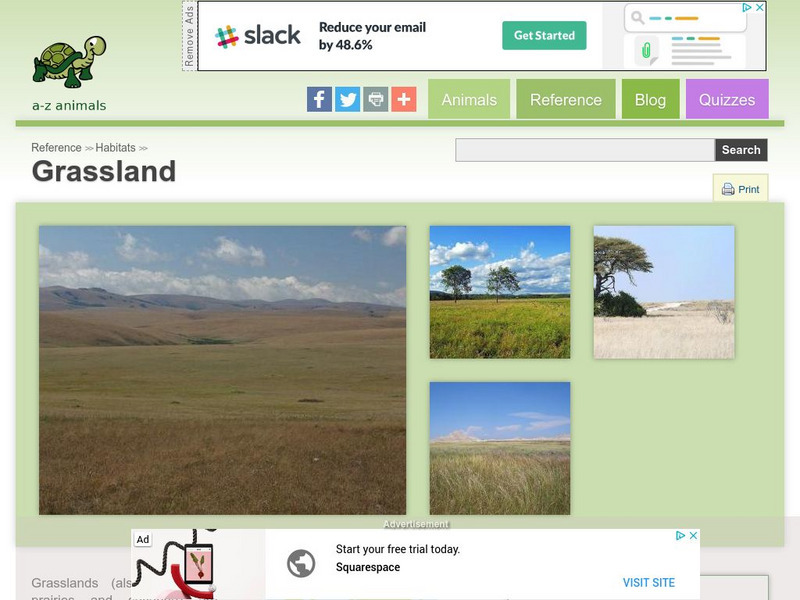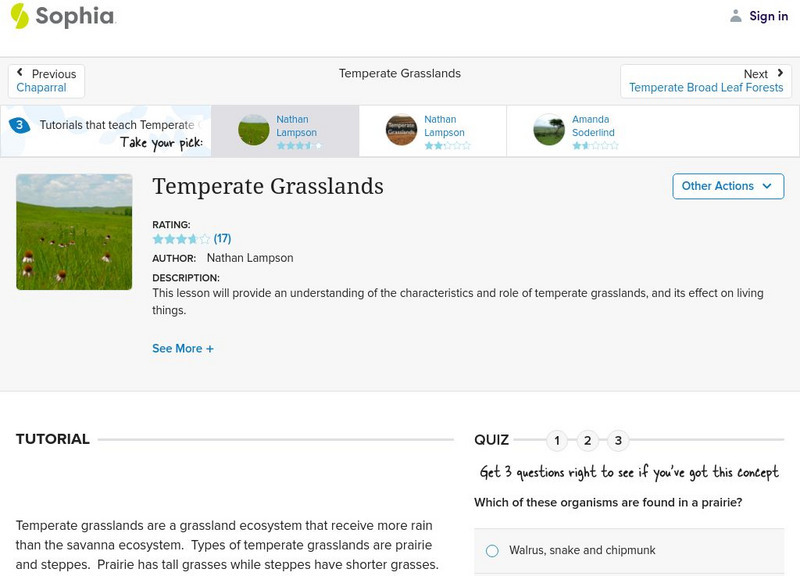BBC
Bbc Nature: Wildlife: Swamp
Take a close-up look at the world of swamps and discover what lives and grows there through pictures, descriptions, and external links. Listen to the various sounds made in swamps in different locations.
BBC
Bbc Nature: Wildlife: Lakes and Ponds
Take a close-up look at the world of lakes and ponds and discover what lives and grows there through pictures, news, descriptions, and external links.
Other
Living Lakes: Saint Lucia Lake
Provides color pictures and statistics on the biological and watershed characteristics of the Saint Lucia Lake on the east coast of South Africa.
BBC
Bbc Nature: Wildlife: Wetlands
Take a close-up look at the world of wetlands and discover what lives and grows there through videos, pictures, news, descriptions, and external links. Listen to the various sounds that occur in wetlands.
PBS
Nh Pbs: Nature Works: Terrestrial Communities
Explore land ecosystems around Earth. Learn about forests, tundra, taiga, grasslands, and deserts.
PBS
Nh Pbs: Nature Works: Rainforests
This resource offers a clear and concise picture of the rainforest biome. The content includes a look at the two different types of rainforests found in the world, animals that live in the rainforests, plants that grown in the rainforest...
Missouri Botanical Garden
Missouri Botanical Garden: What's It Like Where You Live?
Learn about each biome with this site. Site will give you information about the plants, animals, and the climate found at each biome.
Sophia Learning
Sophia: Tundra
Find out the basics of the Tundra biome, including the climate, location, and characteristic animals and plants living there.
Science Education Resource Center at Carleton College
Serc: Geo Glitz: Intensive Geological Survey of the Land at a Specific Location
In this geology field lab, students investigate the surrounding land by walking different transects of the ecosystem, looking for and identifying as many different living and nonliving ecosystem features as possible
TeachEngineering
Teach Engineering: Go With the Energy Flow
Students learn about energy and nutrient flow in various biosphere climates and environments. They learn about herbivores, carnivores, omnivores, food chains and food webs, seeing the interdependence between producers, consumers and...
Texas Instruments
Texas Instruments: Constructing a Biodome
How to construct a biodome (closed ecosystem) for classroom use.
National Institute of Educational Technologies and Teacher Training (Spain)
Ministerio De Educacion: La Transferencia De Energia en Los Ecosistemas
Learn about the transfer of energy in the ecosystem.
National Institute of Educational Technologies and Teacher Training (Spain)
Ministerio De Educacion: La Dinamica De Los Ecosistemas
This unit shows how ecosystems change over time and how matter and energy, which are essential to its operation, are transformed and passed from one living thing to another forming, in some cases, authentic cycles. It contains 19...
Polk Brothers Foundation Center for Urban Education at DePaul University
De Paul University: Center for Urban Education: Prairie Ecology [Pdf]
"Prairie Ecology" is a one page, nonfiction passage about the tallgrass prairie ecosystem and how it works using three animals: the skipper butterfly, ground squirrel, and the bison It is followed by an open-ended question which requires...
PBS
Pbs Kids: Cyberchase, Rescue Ecotopia
A game for kids to understand the basics of an ecosystem and keeping it balanced. A brief description of the animals and how they fit within the system is provided before the game begins.
PBS
Pbs Teachers: Predator Protector Game Lesson
Describe the habitat, food web and ecosystem of shark species. Identify threats to sharks and explore how top predators help to maintain the balance of nature within ecosystems. This lesson plan also contains an interactive game.
Cynthia J. O'Hora
Mrs. O's House: Habitat Project Digital Science Journal
Develop a digital story to illustrate and inform others about different habitats or ecosystems. Resources for building a digital story are provided.
Other
Biology at Shaw High School: What Do Living Things Need to Survive?
Discusses the interrelatedness of all living things and of ecosystems and biomes, and what organisms need to survive and to maximize the carrying capacity of an ecosystem. This explanation is followed by a series of activities including...
PBS
Nh Pbs: Nature Works: Marine Communities
Explore saltwater ecosystems around Earth. Learn about oceans, estuaries, shores, and more.
National Geographic
National Geographic: Human Impact on the Cloud Forest
A study discovering and exploring the cloud forest canopy and how humans have influenced the ecosystem's biodiversity.
A-Z Animals
A Z Animals: Reference: Habitats: Grassland
Find out about the plant and animal interactions within the grassland ecosystem.
CPALMS
Florida State University Cpalms: Florida Students: Where Have All the Scrub Jays Gone?
Learn how organisms rely on one another but also compete with one another within the same ecosystem.
Sophia Learning
Sophia: Temperate Grasslands
Listen to this short podcast explaining the characteristics of the temperate grassland ecosystem. [0:45]
Science Struck
Science Struck: Interspecific Competition: Definition, Examples
Interspecific competition in an ecosystem is explained, along with the different ways it can manifest itself. Includes examples in different types of biomes.









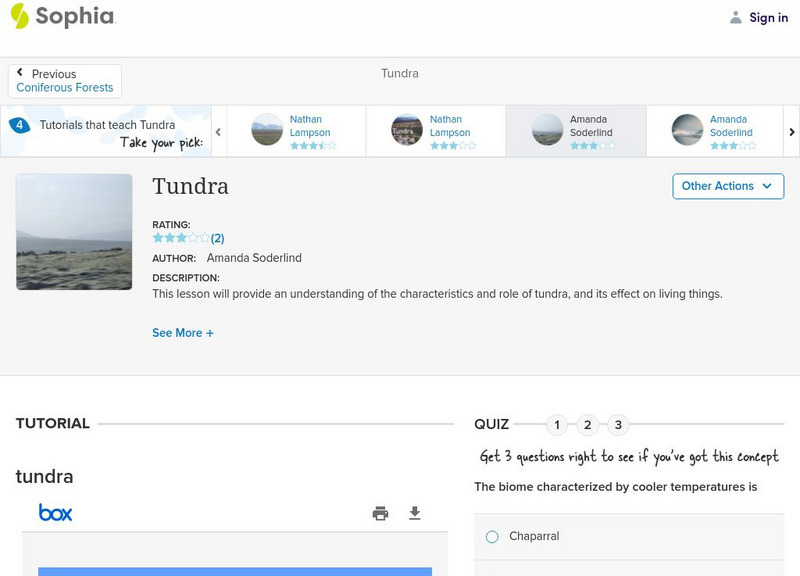
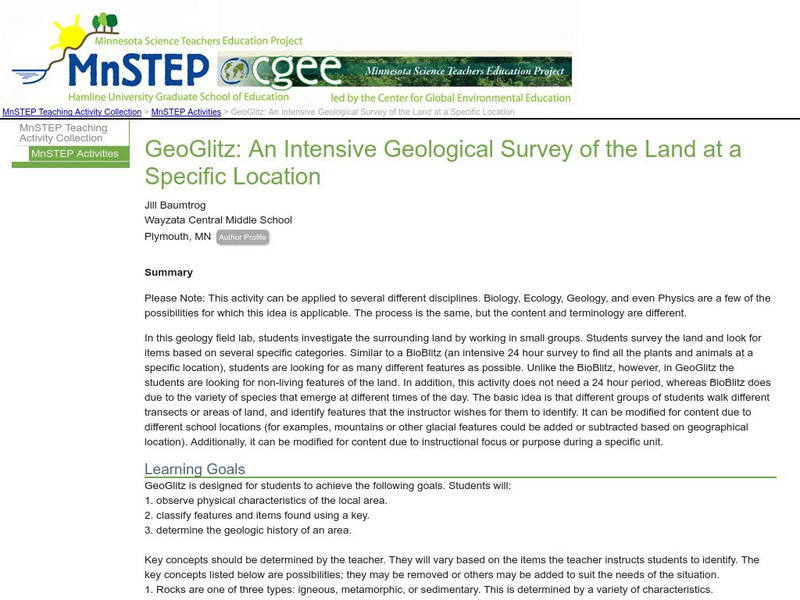

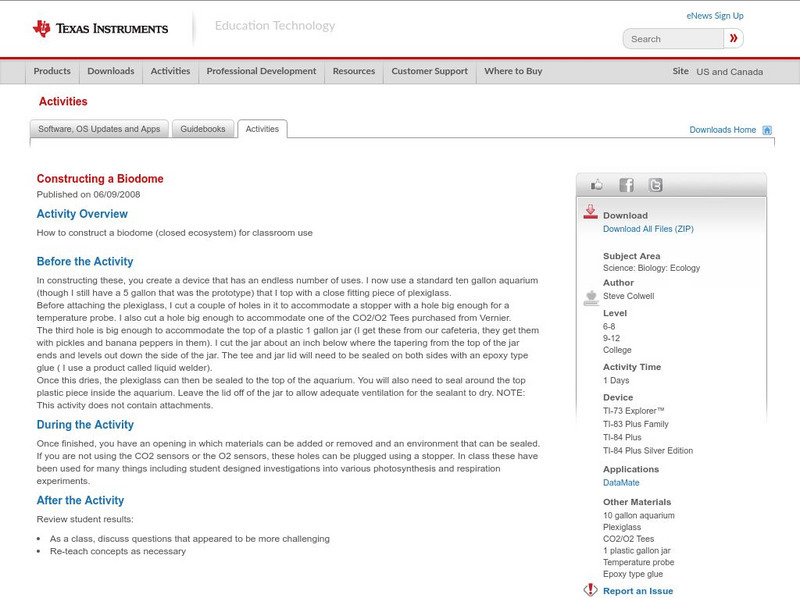


![De Paul University: Center for Urban Education: Prairie Ecology [Pdf] Unit Plan De Paul University: Center for Urban Education: Prairie Ecology [Pdf] Unit Plan](https://d15y2dacu3jp90.cloudfront.net/images/attachment_defaults/resource/large/FPO-knovation.png)



